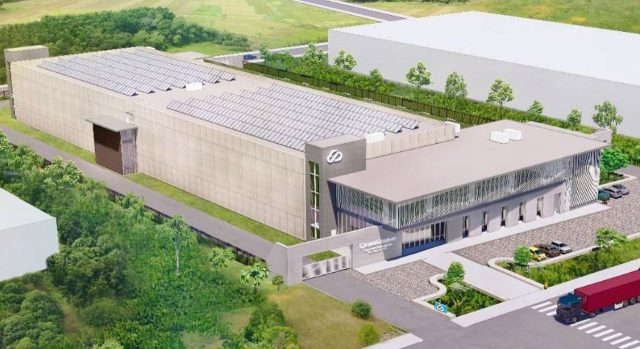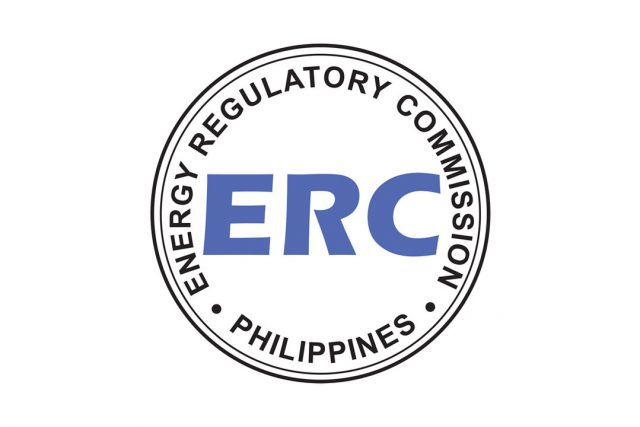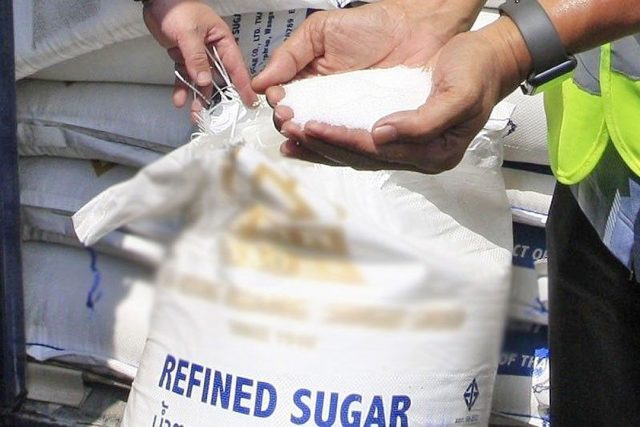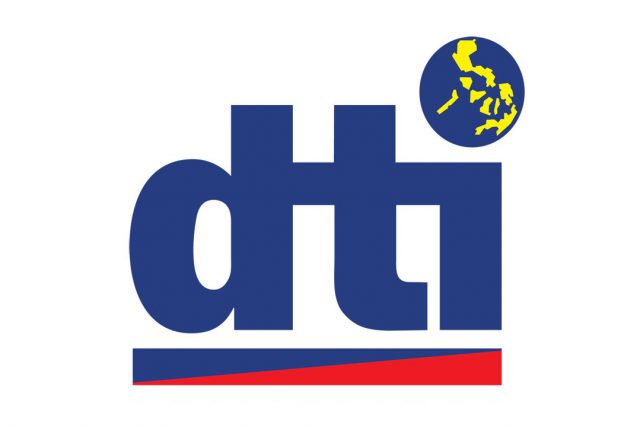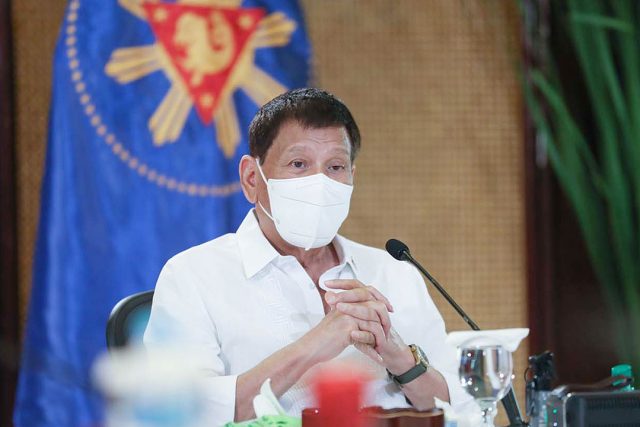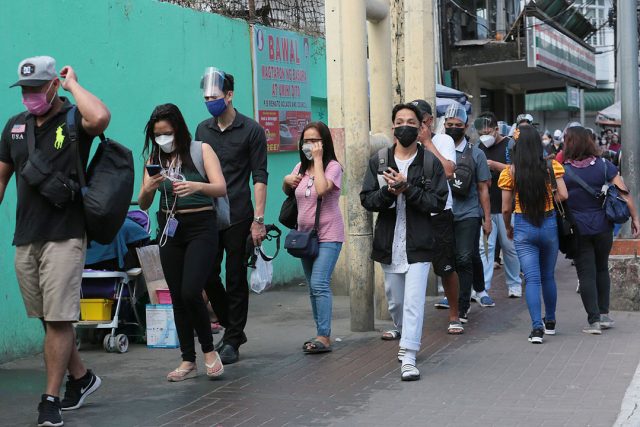Data centers expected to be next high-growth property segment
THE data center market is expected to be the next high-growth segment of the property market amid growing demand from prospective operators, according to Santos Knight Frank, a real estate services firm.
The company said it expects the energy drawn by Philippine data centers to “more than double in the medium term,” with an energy requirement of 125 megawatts (MW) projected to be added to the current 94 MW used by incumbent data-center operators.
“This puts us ahead of Vietnam and catching up with Thailand, definitely among the emerging countries for this sector in Southeast Asia,” Santos Knight Frank’s Data Centers Lead Monica Gonzalez said in an online briefing on Wednesday.
Data centers, which are energy intensive, house servers and other equipment that cater to businesses’ online operations.
Santos Knight Frank said data centers are considered an emerging sector globally. The global data center market was estimated at $59.3 billion last year and is expected to grow to $143.4 billion by 2027.
The Asia-Pacific (APAC) is expected to post 90% growth in total data capacity by 2023, with data center spending in the region projected to grow to over $30 billion by 2023.
“The APAC region is actually the fastest growing market for data centers in the world. Not the largest yet, compared to North America, but the fastest-growing currently,” Ms. Gonzalez said.
“In fact, 30% of global revenue of the data center sector will come from the APAC region as early as next year,” she added.
Interest in the Philippines centers on the government’s push to develop infrastructure and digitize many processes, as well as the talent pool of engineering and information technology (IT) professionals, Santos Knight Frank said.
The Philippines’ plan to shift to renewable energy, as well as the underdeveloped market, are also attractive to investors, it said.
“Singapore is the leading hub for data centers in the region but they have a moratorium in place for new data center development because of how the data centers use quite a lot of land and power, so this has pushed the interest to other countries in Southeast Asia that can absorb that demand such as Malaysia, Thailand, and now the Philippines,” Ms. Gonzalez said.
Most of the data centers in the Philippines are located in Metro Manila and are dominated by telecommunications companies.
The typical data center in the Philippines draws power of 5-7 MW or even less, but Ms. Gonzalez said the firm is seeing demand for centers that require 10-70 MW.
Ms. Gonzalez said data centers need at least one to two hectares of land to accommodate a facility that draws 10 MW.
“There’s no perfect location for a data center. The country is exposed to a lot of natural weather patterns and movements but there are areas in the Philippines such as in the southern greater Manila area, Cavite, and part of Laguna, which are relatively hazard-free… these are areas that the data center operators are looking at mostly,” Ms. Gonzalez said.
Santos Knight Frank Head of Investment and Capital Markets Kash Aristotle Salvador said there are at least five or six groups interested in expanding in the Philippines.
“If everything goes well, we could do at least 20 hectares for 2022. This is all preliminary; this depends on how fast they can move in terms of their acquisitions but the demand is there,” Mr. Salvador said.
YCO MANILA DIGITAL 1
Separately, YCO Cloud Centers said it is building its first data center serving the capital region, which will be called YCO Manila Digital 1, to be located in Malvar, Batangas.
The company said the project will be a “gateway for the expansion of digital businesses within the Philippines.”
“Our data center will address interest from enterprises seeking to scale their mission-critical workload in the region. Special consideration has been placed on delivering greater connectivity, compute capacity, and coverage in the areas along with sustainable sources of electrical power,” YCO Chief Executive Officer Nik de Ynchausti said in a statement on Wednesday.
YCO Manila Digital 1, with a Tier III/Tier III+ classification, will draw 12 MW, powered by renewable energy. — Keren Concepcion G. Valmonte
Housing activity seen picking up to clear pandemic backlog
THE housing industry is expected to grow this year as developers clear up the backlog that built up during the pandemic, an industry association said.
“In 2020, all private developers experienced a downward trend. Sales were not as good and collections were a challenge. We understand some of our buyers lost their jobs or shifted their priorities. Fortunately, towards the end of 2020 and 2021, a lot of developers were able to recover, but not yet to pre-pandemic levels,” May P. Rodriguez, president of the Subdivision and Housing Developers Association, Inc. at a virtual briefing.
“Private developers were able to accomplish 50 to 70% of what they were doing pre-pandemic, and I think the outlook is it will continue to improve in 2022,” Ms. Rodriguez added.
According to a recent Colliers International Philippines report, the housing sector is headed for a “rebound” in 2022.
“We see the economic expansion supporting demand in the residential sector, whether in the pre-selling or secondary markets. While we saw initial headwinds at the start of the year, especially with the spread of the Omicron variant, the gradual return of foreign professionals and turnaround in business and consumer confidence should help fuel the take-up of more residential units. We also see rents and prices recovering in the next 12 months. These indicators bode well for the residential market,” according to the report.
Director of the Housing and Real Estate Development Regulation Bureau Angelito F. Aguila said there is opportunity in idle government land for long-term and medium-term development.
“There is so much land from the government which can be (made) available to… informal settlers and even the private sector. If we have to increase housing production, we need to make land more accessible,” he said.
During the pandemic, Ms. Rodriguez said developers struggled to build projects due to quarantine protocols.
“We have commitments we have to deliver. We needed consent to extend the timetable for development. There was a circular allowing additional time to complete and then when that got approved, we started talking to buyers,” she said.
“We came up with quick measures to address the needs of developers in light of the pandemic. We gave them extension of time to develop. Our primary mandate is buyer protection, so we also granted a grace period to buyers,” Mr. Aguila added.
The industry is working with the Board of Investments (BoI) to accelerate housing development, participants at the briefing said.
“We are discussing with the BoI the housing gap, which is mostly in socialized housing. We need incentives so there are more houses in the affordable market. We stressed the fact that housing provides employment (and) has a multiplier effect. In the private sector, providing decent housing is something we want to do. Socialized housing has a price ceiling, so it goes back to affordability. Private businesses need to recover the cost of houses we are selling. Aside from that, we welcome incentivized compliance to balance the housing market,” Ms. Rodriguez said.
Rental housing is an emerging segment due to the pandemic, and should be encouraged by the government, Mr. Aguila said.
“We have to come up with other modes of security with housing. We have rental housing so that those not ready for home ownership due to affordability or whatever reason can avail of temporary rental housing. Rental housing can be incentivized by the government this way,” he added.
“Rental housing is something the private sector can undertake with local government units (LGUs). LGUs have idle land that… can be used to develop something to rent to government employees or informal settlers,” Ms. Rodriguez said.
“We can say that rental properties are thriving. Currently, those who are working are the ones renting (to minimize commuting). Even students, those coming from the provinces and would like to study elsewhere. There is a market for rentals,” she added.
Mr. Aguila cited the need to make the process for approving housing projects faster and more efficient.
“We need to come up with one, single housing regulatory system. Right now, it’s still fragmented, and we come up with one system to make implementation effective and efficient,” he said.
Mr. Aguila and Ms. Rodriguez said potential clients of the housing industry are not making the most of the Home Development Mutual Fund (Pag-IBIG Fund), which can help them get on the property ladder.
“The loans of Pag-IBIG are developer assisted, so we want to educate our buyers because they are afraid to take out loans. We have to… tell them that Pag-IBIG loans are very affordable. For P450,000 to P480,000 houses, your monthly amortization can be less than P2,000 for a 30-year loan. It’s something not everyone realizes is available,” Ms. Rodriguez said.
“Pag-IBIG is not a bank, they’re not restricted by banking rules. It has a way for coming up with lenient requirements for lower income classes,” Mr. Aguila added. — Luisa Maria Jacinta C. Jocson
P500 million set for unsecured, zero-interest loans to help farmers, fisherfolk after storm
A ZERO-INTEREST loan program with a budget of P500 million is being prepared for farmers and fisherfolk whose livelihoods were damaged by Typhoon Odette (international name: Rai), including P75 million for Northern Mindanao, or Region X.
The Department of Agriculture’s Region X Executive Director Carlene C. Collado said in a statement that final details of the terms of the unsecured three-year loans are still being determined, including the maximum loan amount.
The loans will be offered by the Agricultural Credit Policy Council (ACPC) under a program intending to provide “survival and recovery assistance.” Timelines for the application period and loan release have not been set.
“The loan is intended to provide relief and aid in rehabilitating the farming and fishing activities of affected farmers and fishers through credit for the purchase of inputs, repair of farm and fishery assets, and acquisition of livestock and work animals,” ACPC Program Development Division Chief Noel Clarence M. Ducusin said.
Priority for the loans will be given to small farmers and fisherfolk listed on the Registry System for Basic Sectors in Agriculture. — Luisa Maria Jacinta C. Jocson
DoE endorses 15 power plants to ERC
THE Department of Energy (DoE) endorsed on Jan. 15 power generation facilities to the Energy Regulatory Commission (ERC) for issuance of a five-year license to operate commercially.
The list released by department on Wednesday indicates that one of the 15 facilities is hydro-powered, with the remainder diesel.
The biggest of the diesel plants is the DMPC Mobo Diesel Power Plant Project of DMCI Masbate Power Corp., which has a capacity of 24.352 megawatts (MW).
The hydropower plant is the Tubig Hydroelectric Power Project of Taft Hydroenergy Corp. in Eastern Samar, with 15.93 MW generating capacity.
The 15 facilities are expected to generate a combined 48.96 MW, with diesel plants accounting for 67% of the total.
In 2021, the DoE endorsed 279 power facilities to the ERC, of which 213 were diesel-powered, 27 hydro, 16 solar, and 10 already established coal-fired plants. — Marielle C. Lucenio
Sugar regulator says no action on imports following court order
THE Sugar Regulatory Administration (SRA) said it has been served a restraining order on its plan to import 200,000 metric tons of refined sugar.
“The SRA shall hold in abeyance any official statement or act pertaining to importation and shall yield to the court’s order, in accordance with the sub-judice rule. This is without prejudice to any legal action which the SRA may thereafter undertake,” the SRA said in a statement.
On Feb. 15, the Negros Occidental Regional Trial Court issued a temporary restraining order (TRO) against Sugar Order No. 3, the import plan which the SRA said is needed to create a buffer supply between sugar seasons.
The order is in effect until March 2.
“Stakeholders are continually assured that the SRA is complying with its mandate under existing laws, rules and regulations. Its end in view is toward addressing the needs of the sugarcane industry for all concerned sectors under its authority and jurisdiction,” the SRA added.
The court will hear on Feb. 24 arguments for or against the issuance of a writ of preliminary injunction on sugar imports.
The United Sugar Producers Federation led the filing of the TRO, citing the need to halt imports due to depressed prices and oversupply. — Luisa Maria Jacinta C. Jocson
PPA awards P1-B Surigao port management contract
THE Philippine Ports Authority (PPA) said it recently awarded to a joint venture the P1-billion port terminal management contract for the Port of Surigao.
The joint venture of Harbour Center Port Holdings, Inc. and GlobalPort Ozamiz Terminal, Inc. was awarded on Jan. 21 the P1.07-billion port terminal management contract for the Port of Surigao, according to the notice of award issued by the PPA.
“You are hereby instructed to formally enter into contract with us and to post the required performance security… within 30 calendar days from the signing of the port terminal management contract,” the PPA said in its notice, as signed by General Manager Jay Daniel R. Santiago.
“Failure to enter into contract and provide the performance security shall constitute a sufficient ground for cancellation of this award and the forfeiture of bid security,” it added.
The PPA started inviting bidders for the contract on Oct. 19.
It said the minimum bid for the 15-year port terminal management contract, as announced, was P667.63 million.
The winning bid was P1.07 billion, exclusive of all taxes.
The contract covers the management and operation of the cargo handling, passenger, roll-on/roll-off services, and other port-related services of the Port of Surigao. — Arjay L. Balinbin
Public-private program to help startups expand in Southeast Asia
THE Department of Trade and Industry (DTI) and QBO Innovation Hub said they will work together to help Philippine startups enter Southeast Asian markets.
In a statement on Wednesday, the DTI said the Global AQELERATION Program (GAP) will also assist startups with business development, fundraising, and other activities.
According to the DTI, the program will run until June. It will be rolled out in two phases — a 12-session component that will help startups developing expansion plans, and a three-month post-acceleration phase which will focus on the plan’s execution.
“Out of the startups participating in the acceleration phase, only 10 will be selected to move forward with the post-acceleration. This program will be implemented in partnership with international accelerators and trade missions in the Association of Southeast Asian Nations (ASEAN),” the DTI said.
Trade Undersecretary Rafaelita M. Aldaba said Philippine startups need support in expanding to new markets.
“Our homegrown startups have the potential to be future unicorns and tech leaders, and the DTI GAP will enable these startups to reach new markets and customers and fulfill their potential,” Ms. Aldaba said.
Startups involved in the program include Prosperna, Senti AI, Plentina, ChatGenie, Agro-Digital PH, Frontlearners, Wela School Systems, Steer by Quick Reach, Race Ya, MedCheck, OMG! (Oh My Genie!), Automart.ph, Dealogikal Corp., Ask Lex PH Academy, and FHMoms, Inc.
“We have entered a new phase in the ecosystem where more startups are not only seeing larger investments but are also ready and looking to venture outside of the country to pursue growth. This program will help our startups gain a foothold in the rest of Southeast Asia, and eventually even expand to Europe, North America, and the rest of the world,” QBO Innovation Hub Executive Director Katrina Rausa Chan said. — Revin Mikhael D. Ochave
When ‘prior filing’ is deemed not enough
A basic rule in taxation is that tax refunds take on the nature of tax exemptions, which are construed strictissimi juris against the taxpayer. This principle, I think, is the moral of the decision in Court of Tax Appeals En Banc (CTA EB) No. 2166, initially docketed as CTA Case No. 9435. Sitting en banc to review a significant issue, the CTA denied a claim for refund due to the claimant’s non-compliance with the prior filing requirement. The CTA ruled that failure to file the administrative claim with the Bureau of Internal Revenue (BIR) before filing the claim for refund with the courts of law is a procedural error.
For context, the taxpayer-claimant paid excise taxes on Aug. 22, 2014 on its imports of various cigarette and alcohol products constituting its commissary and catering supplies. Believing that it is exempt from payment of all import taxes, duties, fees, and other charges on its commissary and catering supplies pursuant to its franchise, the claimant filed a written request for a refund of excise taxes on Aug. 22, 2016 with the Commissioner of Internal Revenue (CIR). Later within the same day, the claimant filed a Petition for Review with the CTA, seeking a refund or the issuance of a tax credit certificate covering the excise taxes it erroneously paid on Aug. 22, 2014.
In cases of recovery of erroneously or illegally collected taxes, the chief governing provision under the Tax Code is Section 229. The provision states that for a claim for refund of erroneously or illegally collected taxes to be valid, it is required that the claimant must first file an administrative claim with the CIR before filing the judicial claim with the courts. Further, both administrative and judicial claims must be filed within the two-year reglementary period, counted from the date of tax payment.
While there is no question that both claims were filed within the two-year prescriptive period for tax payments, the crux of the controversy is whether or not the claimant complied with the prior filing requirement with the BIR before elevating the refund claim to the CTA.
From a layman’s point of view, taking into account the meaning of the word prior, which means preceding in time or order or taking precedence, it seems that the claimant had satisfied the prior filing requirement. It filed its written claim for refund with the BIR before going to the CTA. As proof, it attached an original copy of the claim with the BIR in its Petition before the CTA.
However, from a legal perspective, the tax court found the claims to be procedurally defective. The CTA Division and En Banc both held that the filing of the administrative claim and judicial claim on the same day, even if the administrative claim was filed first, does not comply with the requirements of Section 229 of the Tax Code. While, admittedly, the BIR administrative claim was filed prior to the judicial claim with the CTA, the claimant overstretched its interpretation of what constitutes prior filing.
The CTA explained that the prior filing requirement serves to give notice or warning to the CIR that court action would follow unless the alleged erroneous or illegally collected tax or penalty is refunded, citing the Supreme Court case of Commissioner of Internal Revenue vs. Goodyear Philippines, Inc., G.R. No. 216130. Thus, the same-day filing of both the administrative claim and judicial claim for refund is akin to the concurrent filing of the subject claims, which denies the CIR an opportunity to act on the claim. One might ask, how much time is needed to satisfy the requirement of giving the BIR an opportunity to act on the refund claim?
In the Goodyear case, the administrative and judicial claims were filed only 13 days apart. There are also CTA En Banc decisions promulgated in 2019 and late 2021 where the refund claims were granted notwithstanding the fact that the judicial claims were filed only six or nine days from the filing of the administrative claim.
While there is no hard and fast rule on the timeframe between the filing of the administrative claim and the judicial claim for refund, what is important is that the BIR was given notice or warning that a judicial action will follow in case the refund claim is not acted upon. Further, in the Goodyear case, the Supreme Court clarified that the taxpayer need not wait for the final resolution of the administrative claim for refund before proceeding to the CTA since doing so would be tantamount to the forfeiture of such taxpayer’s right to seek judicial recourse should the two-year prescriptive period expire without the appropriate judicial claim being filed.
With the foregoing pronouncement from the SC, I just wonder if the taxpayer’s refund claim would have been granted had it filed the judicial claim for refund at least a day after the administrative claim was filed with the BIR. After all, the required notice or warning to the BIR, which is crucial in the prior filing requirement under Section 229 of the Tax Code, would have been met.
The views or opinions expressed in this article are solely those of the author and do not necessarily represent those of Isla Lipana & Co. The content is for general information purposes only, and should not be used as a substitute for specific advice.
Rachel D. Sison is a senior manager at the Tax Services Department of Isla Lipana & Co., the Philippine member firm of the PwC network.
Pacquiao to allow probe of Duterte war on drugs
BOXING champion and Senator Emmanuel “Manny” D. Pacquiao on Wednesday said he would allow an international probe of Philippine President Rodrigo Duterte’s war on drugs if elected.
The boxing icon also vowed to fight illegal drugs “the right way,” noting that innocent people had been executed under the tough-talking leader’s anti-narcotics campaign.
“I believe there are extrajudicial killings based on what I know,” he told foreign journalists at a news briefing. “I know some people who have been victimized even though it is not true [that they were involved in drugs].”
Mr. Pacquiao, once a staunch Duterte ally, also said he would consider rejoining the International Criminal Court (ICC), from which the Philippines under Mr. Duterte withdrew in 2018. He promised justice for victims of the drug war.
Called Pacman by his Filipino fans, the senator is behind Ferdinand “Bongbong” R. Marcos, Jr. and Vice-President Maria Leonor “Leni” G. Robredo in presidential opinion polls.
The Hague-based tribunal’s pre-trial chamber has ordered a probe of Mr. Duterte as it found a “reasonable basis” that crimes against humanity might have been committed in his war on drugs.
Back in 2016, the boxing champion had defended Mr. Duterte’s anti-illegal drug campaign, but now thinks some drug suspects might have been executed.
Mr. Pacquiao also said he would form a “peace panel” with China to discuss the South China Sea dispute if he becomes president.
“What we hope and seek here is to be friends with all countries,” he said in Filipino. “It’s the agreement that will help develop the lives of every Filipino family.”
The deal with China should ensure that Filipino rights are not abused, he said, adding that experts and agencies would be allowed to join the discussion. “Our first concern here is the benefits to the Filipino people.”
The South China Sea, a key shipping route, is subject to overlapping territorial disputes involving China, Brunei, Malaysia, the Philippines, Taiwan and Vietnam. China claims more than 80% of the disputed waterway.
The boxing champ said his government would not seek help from other countries in solving the dispute as far as possible.
Several allies have backed the Philippines in the sea dispute with China, whose claim to the sea was rejected by a United Nations-backed tribunal in 2016.
The United States has said it supports the arbitral award and a Mutual Defense Treaty with the Philippines in case of an armed attack on Philippine Armed Forces, public vessels or aircraft in the sea. Under the treaty, both sides must help each other in case of any external aggression.
NET WORTH
Meanwhile, Mr. Marcos, Jr. on Tuesday night said he is OK with divulging his net worth statement if he wins the elections this year. But doing so is still a government official’s prerogative, he added.
“It’s not a problem,” he told a presidential debate on Sonshine Media Network International, which is owned by Mr. Duterte’s spiritual adviser. There is no need to change the law requiring public officials to disclose their net worth, he added.
The Commission on Elections (Comelec) this month rejected lawsuits seeking to disqualify the son and namesake of the late dictator Ferdinand E. Marcos from the presidential race after a trial court convicted him in the 1990s for tax evasion.
The Comelec First Division said the crime did not involve wicked, deviant behavior. The case is on appeal before the en banc.
Mr. Marcos noted that as a private citizen, he had not filed his net worth statement for the past six years, but he would do so once he becomes president. Last month, he said the document could be used to attack political opponents.
Under a memo issued by the Ombudsman in Sept. 2020, an official’s net worth report can only be released to his authorized representative or upon a court order. The Ombudsman order also excluded journalists from obtaining copies of the statements.
Mr. Duterte had not disclosed his net worth despite his vow of transparency, the Philippine Center for Investigative Journalism reported in 2020.
Since the law requiring public officials to disclose their net worth was enacted in 1989, all five presidents before Mr. Duterte had disclosed their net worth year on year without fail, it said.
At Tuesday’s debate, former presidential spokesman Ernesto Abella, labor leader Leodegario “Ka Leody” de Guzman and former Defense chief Norberto B. Gonzales, who are all running for president, said they would disclose their net worth statement if they are elected.
Also on Wednesday, political analyst Victor C. Manhit said Mr. Marcos has a better chance of winning the presidential race this year after his running mate Davao City Mayor and presidential daughter Sara Duterte-Carpio opted to run for vice-president instead.
Duterte loyalists transferred their support from Ms. Carpio to Mr. Marcos as a result, he told an online news briefing. “What we saw is a consolidation of the voices of the Marcoses and Dutertes.”
Mr. Marcos’s lead in presidential opinion polls has increased in the past months. A Social Weather Stations poll in January found that 50% of Filipinos would vote for him as president, up from 47% a quarter earlier.
A similar poll by Pulse Asia Research Group in January found that six of 10 Filipinos would vote for him, up from 53% a month earlier. — Alyssa Nicole O. Tan and KATA
COVID infections fewer than 3,000 for 3rd straight day
THE PHILIPPINES posted fewer than 3,000 coronavirus infections for the third straight day on Wednesday, at 2,671.
This brought the total to 3.64 million, while the death toll reached 55,223 after 77 more patients died, the Department of Health (DoH) said in a bulletin. Recoveries rose by 6,130 to 3.52 million.
The agency said 9.6% of 25,629 samples on Feb. 14 tested positive for the coronavirus, still above the 5% threshold set by the World Health Organization (WHO).
Of 68,829 active cases, 1,130 did not show symptoms, 63,037 were mild, 2,920 were moderate, 1,433 were severe and 209 were critical.
DoH said 98% of new cases occurred on Feb. 3 to 16. The top regions with cases in the past two weeks were Metro Manila with 622, Calabarzon with 323 and Western Visayas with 287 infections. It added that 42% of new deaths occurred in February and 21% in January.
Fourteen duplicates were removed from the tally, 12 of which were recoveries, while 62 recoveries were relisted as deaths. Six laboratories failed to submit data on Feb. 14.
“The positivity rate in the National Capital Region and Calabarzon continued to fall as all provinces had less than 10% positivity rate as of Feb. 15,” the OCTA Research Group said in a report.
It said Metro Manila, Cavite, Laguna, Quezon, and Rizal were now at low risk from the coronavirus, while Batangas province was at moderate risk.
The Philippines is scrambling to vaccinate more people as it reopens the economy.
Citing its nationwide study, healthcare provider PhilCare said the country could reach its goal of injecting 72 million booster shots this year, with more than 59 million Filipinos now fully vaccinated.
In a statement, PhilCare said it’s study found that nine of 10 Filipinos (88.9%) agreed that getting vaccinated would protect themselves and others against the coronavirus.
“It also found that three of 10 respondents (34.7%) who have not been vaccinated yet intend to once vaccines are made available to them,” it said.
“With local governments setting up more and more convenient and accessible vaccination sites and credible vaccine information being made more available, we expect the number of Filipinos getting COVID-19 shots to grow this 2022,” PhilCare President and Chief Executive Officer Jaeger L. Tanco. — Kyle Aristophere T. Atienza






